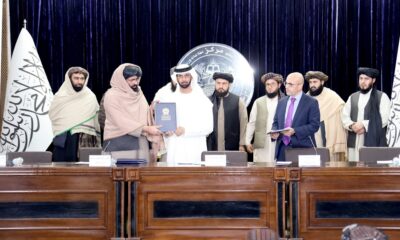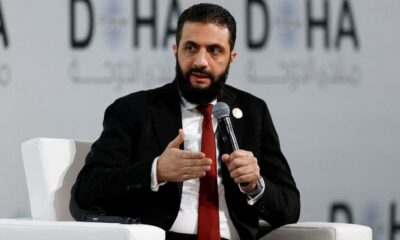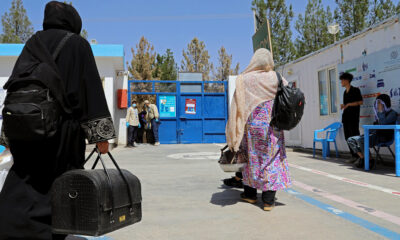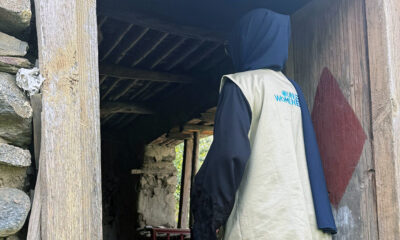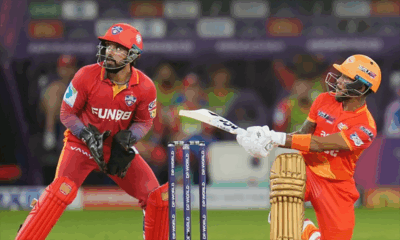Regional
Who are Yemen’s Houthis and why are they attacking Red Sea ships?
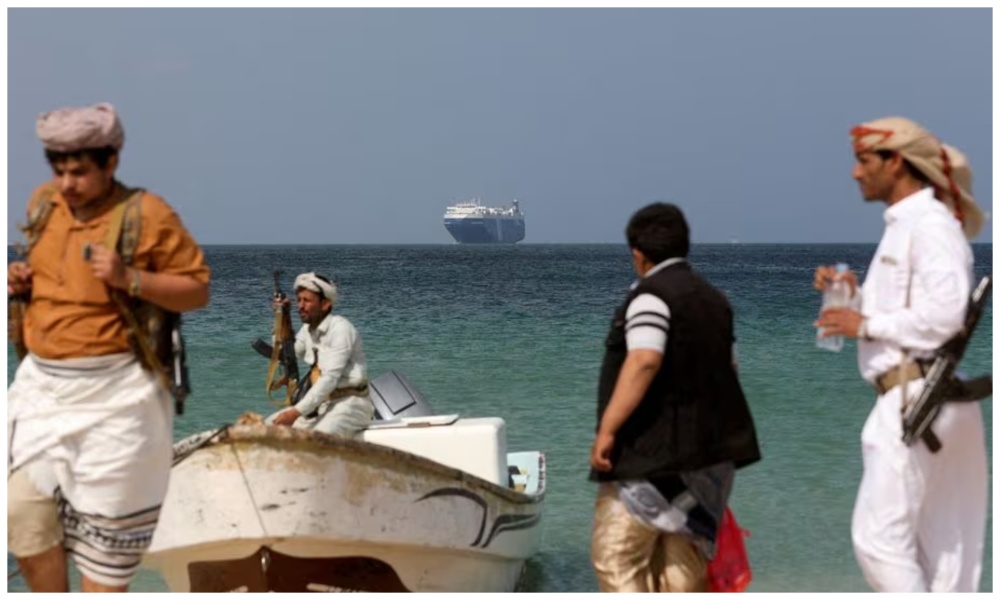
The Iran-aligned Houthis of Yemen are playing an escalating role in the Middle East, attacking shipping in the Red Sea and firing drones and missiles at Israel in a campaign they say aims to support Palestinians in the Gaza war, Reuters reported.
U.S. Defense Secretary Lloyd Austin on Tuesday announced the creation of a multinational operation to safeguard commerce in the Red Sea in response to the Houthi attacks.
The Houthis’ role has added to the conflict’s regional risks, threatening sea lanes through which much of the world’s oil is shipped, and worrying states on the Red Sea as Houthi rockets and drones fly towards Israel.
Who are the Houthis?
History
In the late 1990s, the Houthi family in far north Yemen set up a religious revival movement for the Zaydi sect of Shi’ite Islam, which had once ruled Yemen but whose northern heartland had became impoverished and marginalised, Reuters reported.
As friction with the government grew, they fought a series of guerrilla wars with the national army and a brief border conflict with Sunni powerhouse Saudi Arabia.
Growing Power
Their power grew during the Yemen war which began in late 2014, when they seized Sanaa. Worried by the growing influence of Shi’ite Iran along its border, Saudi Arabia intervened at the head of a Western-backed coalition in 2015 in support of the Yemeni government, Reuters reported.
The Houthis established control over much of the north and other big population centres, while the internationally recognised government based itself in Aden.
Yemen has enjoyed more than a year of relative calm amid a U.N.-led peace push. Saudi Arabia has been holding talks with the Houthis in a bid to exit the war.
Role in Middle East war
The Houthis waded into the latest conflict as it spread around the Middle East, announcing on Oct. 31 they had fired drones and missiles at Israel and vowing they would continue to mount attacks “until the Israeli aggression stops”.
Their actions have echoed the role of the Iran-backed Lebanese group Hezbollah, which has been attacking Israeli positions at the Lebanese frontier, and Iraqi militias which have been firing at U.S. interests in Iraq and Syria.
Stepping up their threats, the Houthis said on Dec. 9 they would target all ships heading to Israel, regardless of nationality, and warned all international shipping companies against dealing with Israeli ports, Reuters reported.
“If Gaza does not receive the food and medicine it needs, all ships in the Red Sea bound for Israeli ports, regardless of their nationality, will become a target for our armed forces,” the Houthi spokesperson said in a Dec. 9 statement.
The Houthis’ slogan is “Death to America, Death to Israel, curse the Jews and victory to Islam”.
Iran links
The United States believes that Iran’s Islamic Revolutionary Guard Corps is helping to plan and carry out the Houthi missile and drone attacks, Reuters reported.
“Iran’s support for Houthi attacks on commercial vessels must stop,” U.S. Defense Secretary Lloyd Austin said on Dec. 18.
Iran denies involvement.
The Saudi-led coalition has long accused Iran of arming, training and funding the Houthis. The Houthis deny being an Iranian proxy and say they develop their own weapons.
Arsenal
The Houthis demonstrated their missile and drone capabilities during the Yemen war in attacks on Saudi Arabia and the United Arab Emirates, targeting oil installations and vital infrastructure.
The arsenal includes ballistic missiles and armed drones capable of hitting Israel more than 1,000 miles from their seat of power in Sanaa.
Its Tofan, Borkan, and Quds missiles are modeled on Iranian weapons and can hit targets up to 2,000 km away, experts say.
The Houthis fired these missiles at Saudi Arabia dozens of times during the Yemen war. In September, the Houthis displayed anti-aircraft Barq-2 missiles, naval missiles, a Mig-29 fighter jet and helicopters for the first time.
The Houthis have also used fast boats armed with machine guns in their operations against shipping.
Regional
Putin questions US punishing India for buying Russian oil
Hours earlier, Modi received Putin at the airport in Delhi, a rare gesture underlining the warm ties between the leaders.

Russian President Vladimir Putin challenged heavy U.S. pressure on India not to buy Russian fuel if the U.S. could do so as he began a two-day state visit, where he was embraced on arrival by Indian Prime Minister Narendra Modi.
Putin spoke in comments to Indian broadcaster India Today, aired hours after landing in New Delhi for a visit during which both countries are seeking to boost mutual trade and expand the variety of items in transactions.
New Delhi and Moscow have strong ties going back to the days of the former Soviet Union, and Russia has been the main source of arms for India for decades. India has also emerged as the top buyer of seaborne Russian oil despite Western sanctions imposed after Moscow launched its invasion of Ukraine in February 2022.
India’s crude imports, however, are set to hit a three-year low this month following a punitive U.S. tariff on Indian goods and a tightening of sanctions on Russia, as U.S. President Donald Trump’s administration says India’s purchases of cheap Russian oil help finance Moscow’s war in Ukraine.
“The United States itself still buys nuclear fuel from us for its own nuclear power plants. That is also fuel,” Putin told India Today.
“If the U.S. has the right to buy our fuel, why shouldn’t India have the same privilege? This question deserves thorough examination, and we stand ready to discuss it, including with President Trump,” he said.
India has said Trump’s tariffs are unjustified and unreasonable and pointed at ongoing U.S. trade with Moscow. The U.S. and European Union continue to import billions of dollars worth of Russian energy and commodities, ranging from liquefied natural gas to enriched uranium.
“There is a certain decline in overall trade turnover during the first nine months of this year,” Putin said when asked if Indian oil purchases had fallen under pressure from the West.
“This is just a minor adjustment. Overall, our trade turnover stands almost at the same level as before.”
He added: “Trade in petroleum products and crude oil … Russian oil, is running smoothly in India.”
Asked how India and Russia should deal with Trump and his tariffs, Putin said the U.S. President has advisers who believe that implementing such tariff policies ultimately benefits the U.S. economy. “We hope that, in the end, all violations of World Trade Organization regulations will be rectified,” he said.
Hours earlier, Modi received Putin at the airport in Delhi, a rare gesture underlining the warm ties between the leaders.
They embraced on a red carpet on the tarmac and then drove away in the same vehicle for a private dinner hosted by Modi.
Senior Russian ministers and a large Russian business delegation were in New Delhi for Putin’s visit and the two leaders will hold summit talks on Friday when they are expected to announce a raft of deals.
“Delighted to welcome my friend, President Putin to India. India-Russia friendship is a time-tested one that has greatly benefited our people,” Modi posted on X ahead of the dinner.
India and Russia aim to raise two-way trade to $100 billion by 2030. Their commerce rose more than five-fold from about $13 billion in 2021 to near $69 billion in 2024–25, almost entirely driven by Indian energy imports.
Bilateral trade eased to $28.25 billion in April–August 2025, reflecting a decline in crude oil imports.
At the same time, India is looking for new destinations to increase exports of its goods hit by the punishing 50% tariff imposed by Trump.
Russia wants to import more Indian goods to balance bilateral trade, which is currently heavily skewed towards energy, Deputy Kremlin Chief of Staff Maxim Oreshkin told a business conference in New Delhi earlier on Thursday.
Indian Trade Minister Piyush Goyal said New Delhi wants to diversify exports to Russia and increase sales of automobiles, electronics goods, data-processing equipment, heavy machinery, industrial components, textiles, and foodstuffs.
Regional
Sons of Pakistan’s jailed Imran Khan voice fears for his safety
The family has repeatedly sought access for Khan’s personal physician, who has not been allowed to examine him for more than a year, he added.
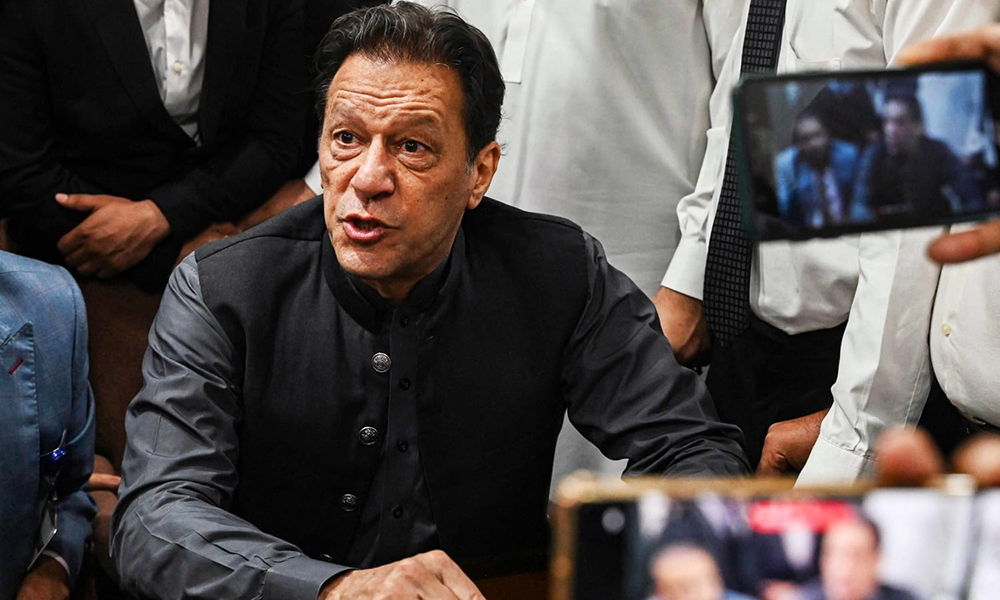
The sons of Pakistan’s jailed former prime minister Imran Khan fear authorities are concealing “something irreversible” about his condition after more than three weeks with no evidence that he is still alive, one of them said, Reuters reported.
As court-ordered prison visits stay blocked and rumours swirl about possible prison transfers, his son, Kasim Khan, told Reuters the family has had no direct or verifiable contact with Khan, despite a judicial order for weekly meetings.
“Not knowing whether your father is safe, injured or even alive is a form of psychological torture,” he said in written remarks, adding that there had been no independently confirmed communication for a couple of months.
“Today we have no verifiable information at all about his condition,” the son added. “Our greatest fear is that something irreversible is being hidden from us.”
The family has repeatedly sought access for Khan’s personal physician, who has not been allowed to examine him for more than a year, he added.
Pakistan’s interior ministry did not respond to a request for comment. Speaking on condition of anonymity, a jail official told Reuters that Khan was in good health, adding that he was not aware of any plan for a move to a higher-security facility.
Khan, 73, has been in jail since August 2023, convicted in a string of cases that he says were politically driven following his ouster in a 2022 parliamentary vote, read the report.
His first conviction centred on accusations that he unlawfully sold gifts received in office, in a proceeding widely referred to as the Toshakhana case.
Later verdicts added lengthy jail terms, including 10 years on accusations of leaking a diplomatic cable and 14 years in a separate graft case tied to the Al-Qadir Trust, a charity project prosecutors say figured in improper land deals.
Khan’s party, the Pakistan Tehreek-e-Insaf (PTI), says the prosecutions aim to exclude him from public life and elections.
The family says the lack of communication has fuelled fears over what it calls a deliberate effort to push Khan out of public sight.
Television channels have been told not to use Khan’s name or image, leaving only a single grainy court picture on the internet as the only glimpse of him since his imprisonment.
“This isolation is intentional,” Kasim said, referring to the authorities he believes are keeping his father cut off. “They are scared of him. He is Pakistan’s most popular leader and they know they cannot defeat him democratically.”
Kasim and his older brother Suleiman Isa Khan, who live in London with their mother, Jemima Goldsmith, have kept a distance from Pakistan’s dynastic politics, Reuters reported.
The brothers, who call him “Abba”, have spoken publicly only sparingly mainly about Khan’s imprisonment.
Kasim added that the last time they saw their father was in November 2022, when they visited Pakistan after he survived an assassination attempt.
“That image has stayed with me ever since. Seeing our father in that state is something you don’t forget,” Kasim said.
“We were told he would recover with time. Now, after weeks of total silence and no proof of life, that memory carries a different weight.”
The family was pursuing internal and external avenues, such as appeals to international human rights organisations, and wanted court-ordered access restored immediately, he said.
“This is not just a political dispute,” Kasim said. “It is a human rights emergency. Pressure must come from every direction. We draw strength from him, but we need to know he is safe.”
Regional
Gaza death toll tops 70,000, health ministry says
The war in Gaza began after Hamas-led militants killed 1,200 people, most of them civilians, and seized 251 hostages in their attack on southern Israel.
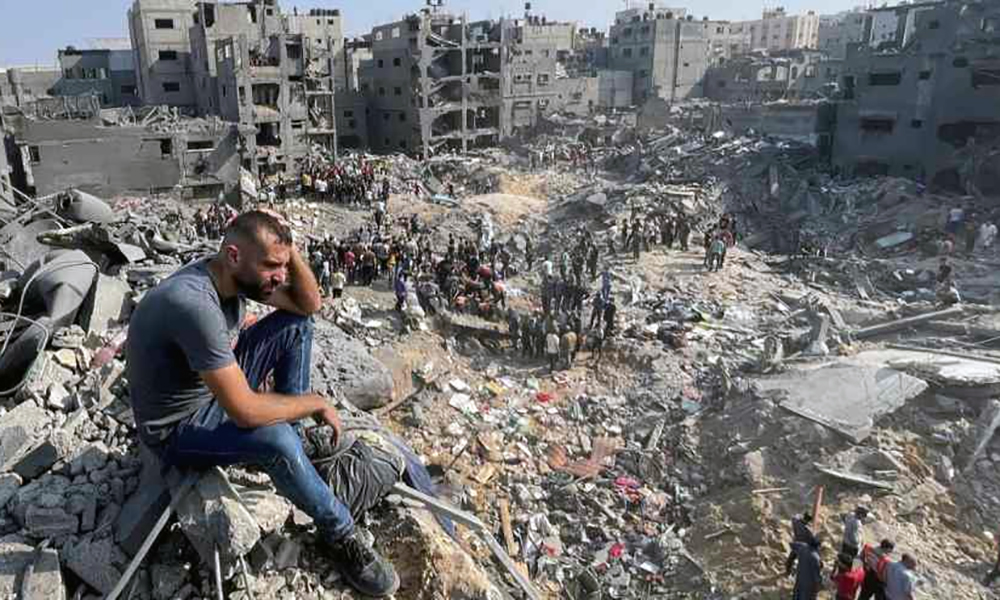
The number of people confirmed killed in Israel’s offensive in the Gaza Strip has passed the 70,000 mark, the enclave’s health ministry said on Saturday.
A total of 301 people have been added to the toll since Thursday, taking it to 70,100, the ministry added. Two died in recent Israeli strikes, the rest were identified from remains buried for some time in the rubble, according to the statement.
There was no immediate comment from Israel, which has questioned the accuracy of the figures from Gaza, though it has not published its own estimate.
Israel’s bombardment of Gaza – triggered by the deadly October 7, 2023 Hamas attack on Israel – has left much of the strip in ruins, making it difficult to gather accurate information on casualties.
In the first months of the war, officials counted bodies that arrived in hospitals and registered names and identity numbers.
In the later stages, Gaza health authorities said they held off including thousands of reported deaths in the official tally until forensic, medical and legal checks could be made.
Since a fragile ceasefire took hold on October 10, the reported death toll has kept climbing steadily as authorities there take advantage of the relative calm to search for bodies in the wreckage.
The war in Gaza began after Hamas-led militants killed 1,200 people, most of them civilians, and seized 251 hostages in their attack on southern Israel.
Israel’s retaliatory offensive has shattered whole families.
Moaz Mghari said he had lost 62 relatives, including his parents and four siblings, in a series of Israeli airstrikes that destroyed two residential buildings near the entrance to Bureij camp in the central Gaza Strip.
He told Reuters he had been at a nearby clothing shop when he heard the sound of explosions and the sky turned dark with dust. He rushed home to find his family’s building turned to rubble.
“Then I began to realize what happened, I lost everything, I lost everyone,” Mghari, said.
Israel’s military has denied targeting civilians since the conflict started more than two years ago.
Pre-war Gaza had robust population statistics and better health information systems than in most Middle East countries, public health experts told Reuters.
The U.N. often cites the health ministry’s death figures and says they are credible.
-
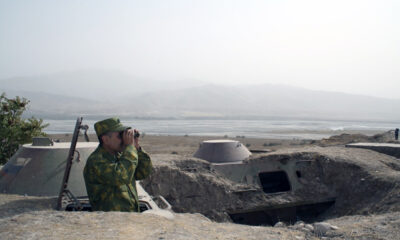
 Latest News4 days ago
Latest News4 days agoSituation along Afghan-Tajik border “not stable,” says Dushanbe
-
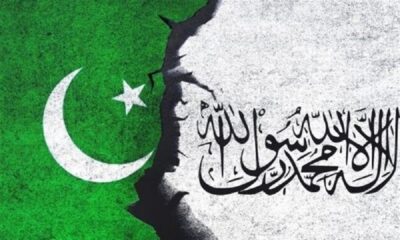
 Latest News4 days ago
Latest News4 days agoNew meeting between Afghanistan and Pakistan held in Saudi Arabia
-

 International Sports4 days ago
International Sports4 days agoILT20: Desert Vipers defeat Dubai Capitals as new season opens
-
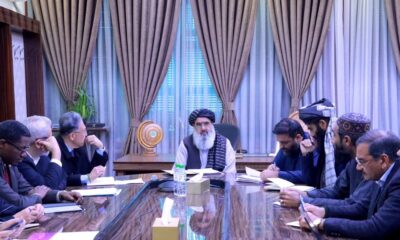
 Health4 days ago
Health4 days agoHealth ministry holds meeting with envoys of international organizations in Kabul
-

 Latest News4 days ago
Latest News4 days ago1.5 million Afghans living with serious disabilities
-
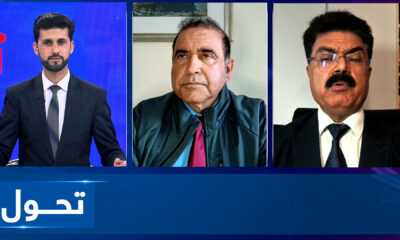
 Tahawol5 days ago
Tahawol5 days agoTahawol: Moves toward peace between Kabul-Islamabad discussed
-

 Business2 days ago
Business2 days agoAriana Afghan Airlines boost air trade with arrival of new cargo aircraft
-
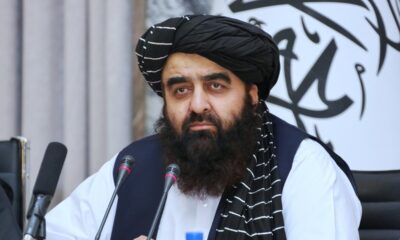
 Latest News4 days ago
Latest News4 days agoMuttaqi highlights IEA’s restraint as tensions rise with Pakistan


